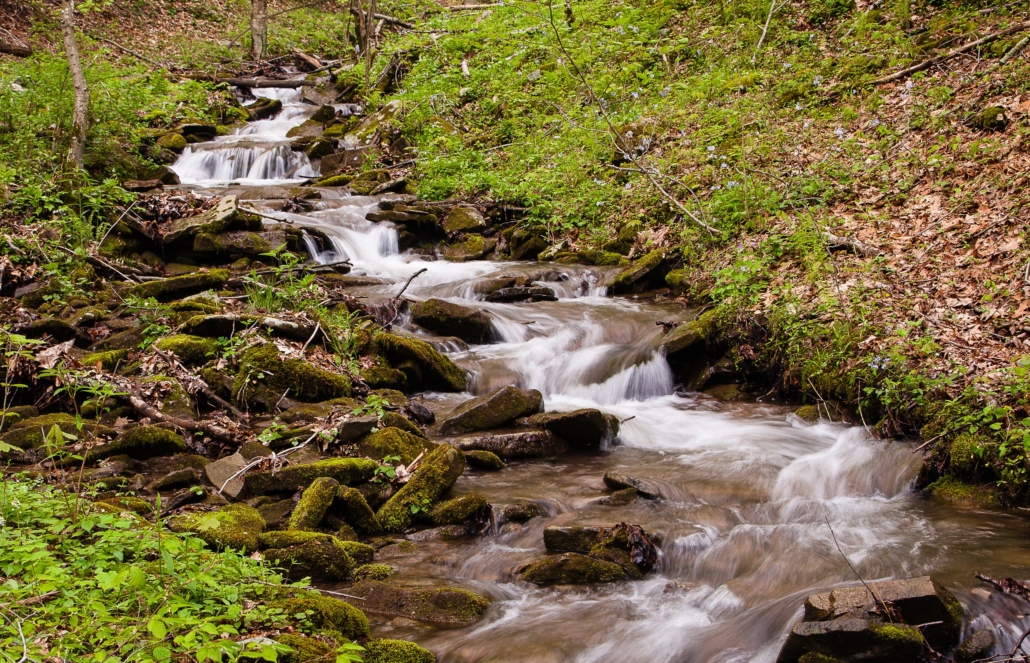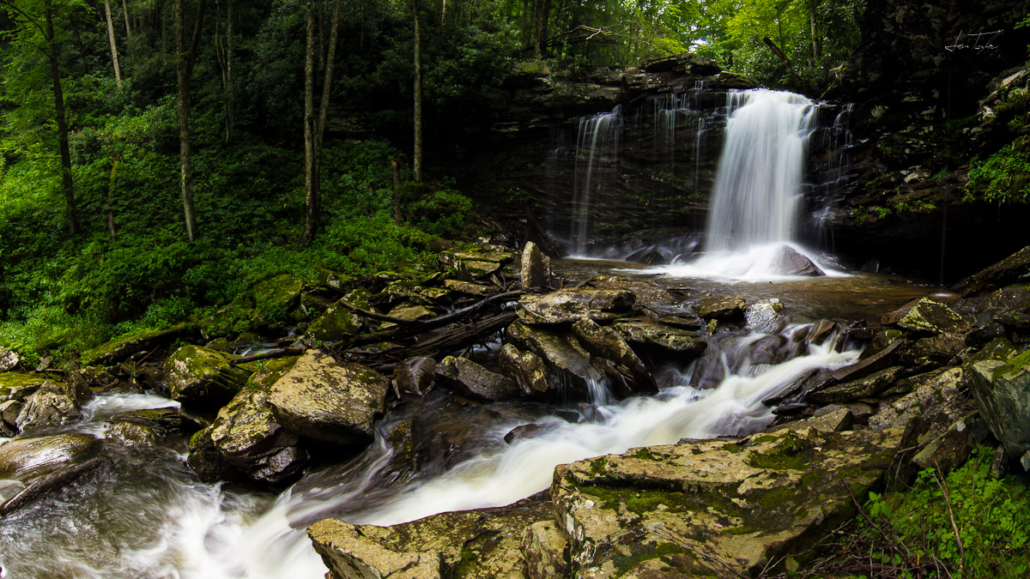Headwaters in the Monongahela National Forest: Pure, Pristine Water
The headwaters of the Monongahela National Forest (The Mon Forest) provide the cleanest water in West Virginia. Rivers like the Potomac, Greenbrier, Elk, Tygart, Cheat, and Gauley all have their origins in the Mon. Pocahontas County alone is the source for eight rivers: Cherry, Cranberry, Elk, Gauley, Greenbrier, Tygart, Williams, and Shavers Fork of the Cheat River. These rivers combine with others to flow into the Chesapeake and Ohio Watersheds. Overall, about 9% of the people in the US can trace the source of their drinking water to the Mon Forest Headwaters.
These waterways are crucial to local economies and to recreation. The Forest Service has been managing some of these headwaters as free-flowing waterways with remarkably outstanding values. We asked recreation users of the Mon Forest about these headwaters: anglers, hunters, kayakers, hikers, and backpackers all recognized the waters of the Mon Foret as the cleanest in the state, in large part, thanks to the efforts of the US Forest Service. However, they expressed concerns that the management practices in the forest management plan can be changed. You can read more about the thoughts of recreation users of the Mon Forest below.
West Virginia Rivers has been asking how we can help make safeguards for our clean Mon Forest headwaters more permanent. We held a virtual “Conversation on Headwaters” on March 23. Participants learned about the importance of Mon Forest headwaters, community conversations, and the efforts of the Forest Service. They considered different ways to provide permanent safeguards for the Mon Forest headwaters. If you missed the presentation, or want to review it, here are the recording and the slides presented.
We invite you to share your thoughts about providing permanent safeguards to our Mon Forest Headwaters and what concerns you may have about new policies. Fill out our survey or click on the button below.
Our Wild & Wonderful Mon Forest
The Monongahela National Forest is the crown jewel of West Virginia’s public lands. It’s home to more than 75 tree and 225 bird species, 60 nongame/forage fish species, 12 game fish species, and eight federally listed, threatened, or endangered bird, bat, salamander, and plant species.
In the Fall of 2021, WV Rivers held listening sessions to hear from recreation users who love the Mon Forest. We wanted to hear thoughts, concerns, and visions for the future of the National Forest. What we heard from forest users will form the foundation of a proactive campaign to bring additional support to the Monongahela Forest. You can download a copy of our report on the listening sessions. We have shared this report and our findings in community conversations in Mon Forest Towns. We continue to find support for trail-building skills and maintenance, avoiding overutilization of unique sites and other policy areas. The strongest support was expressed for permanent safeguards for our pristine clean Mon Forest headwaters.
Top Concerns Shared By Listening Session Participants
- Water Quality. The clean Mon Forest Headwaters are essential for drinking water and for the habitat and wildlife essential for all forms of recreation use and the economic benefits that come from nature-based recreation.
- Trails. Trail systems throughout the forest are in desperate need of development and maintenance. Volunteers, skill-building, and funding are needed to serve these trails.
- Protect Wilderness. Ensure wilderness and sensitive areas are protected from overuse. Promote areas in the Mon Forest that receive less use.
- Access. Ensure people of all abilities can access the forest. Increase the use of public lands by communities traditionally left out of outdoor spaces. Promote lesser-known recreational activities.
- Maps. Improve the accuracy and availability of forest and trail maps. Increase resources available for mapping.
- Invasive Species. Manage invasive species found in the Mon Forest.
- Safe River Recreation. Increase the number of U.S. Geological Survey Stream Gages, and permit bridge access to recreation locations.
- Funding. Develop an endowment fund and other funding for forest recreation.





